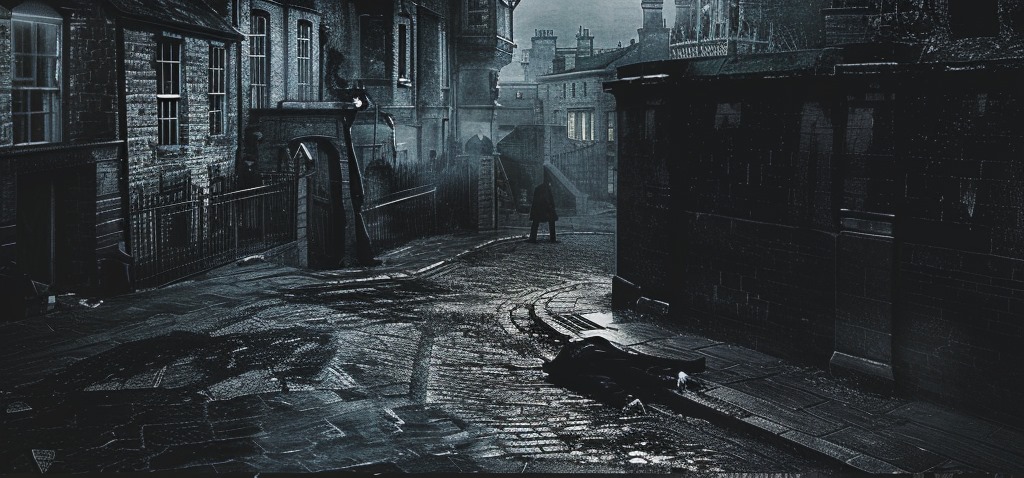
Jack the Ripper: A Playbook for the Quirky Designer
Step right into the eerie, foggy alleys of Victorian London, where gas lamps sputter like anxious fireflies, and cobblestones murmur secrets of the night. Today, we’re diving headfirst into
something so outlandish, you might question my sanity: finding design inspiration in none other than Jack the Ripper. Yup, you read that right. But hold your torches and pitchforks! This isn’t about glorifying his crimes. Instead, we’re hijacking his peculiar methods—his razor-sharp focus, relentless precision, and mastery of mystery—and flipping them into a creative toolkit. Wild idea? Totally. Brilliant? Absolutely.
Because, let’s face it, great design doesn’t come from playing it safe. Sometimes, the most dazzling ideas emerge from the most unexpected muses. So, grab your metaphorical magnifying glass and lantern—we’re about to solve the riddle of how the Ripper’s chilling methods can inspire designs that dazzle. (No dismemberment required, I promise.)
Step One: Mastering the Art of Precision
Jack the Ripper wasn’t exactly a fan of chaos. His approach? Laser-focused, borderline
obsessive. He handpicked his “sites” with precision—secluded corners where the shadows whispered, “This way, sir.” Every move was calculated, every detail deliberate, as if he were working on a twisted masterpiece.
Now, swap out the creepy context for a design studio. Precision in architecture and interiors isn’t just about hitting the right measurements (though your contractor might argue otherwise). It’s about feeling the pulse of a space—its quirks, its rhythm, its untapped potential. Think of it as channeling Sherlock Holmes with a measuring tape: dissecting a room, stripping away the fluff, and turning every detail into a symphony of function and beauty.
Step Two: The Power of Place—Designing for the Scene

The Ripper had a knack for reading his surroundings. Dark alleys? Check. Convenient fog
cover? Check. He knew Whitechapel like the back of his (probably bloodstained) hand. He didn’t just “work” there; he turned it into his eerie stage.
Now imagine treating every project like it’s got a personality of its own. A good designer doesn’t bulldoze a space’s quirks—they dance with them. Whether it’s a snug urban loft screaming for
light or a sprawling countryside estate aching for coziness, the key is to let the site’s spirit shine. A space should feel alive, like it’s having a delightful conversation with its surroundings.
Step Three: Picking the Right Tools—A Material Affair
Our infamous antihero didn’t carry a Swiss Army knife for kicks. His tools were sharp, specific, and scarily efficient. In design, we swap scalpels for materials—but the principle’s the same. Every material you choose tells a story: warm wood whispers nostalgia, gleaming metal shouts industrial chic, and concrete? Well, that’s the moody poet in the corner.
Picture this: a gallery where cold, smooth marble floors meet raw, textured brick walls, creating a conversation between elegance and grit. Or a café where reclaimed wood beams mingle with soft pastel tiles for a vibe that’s equal parts rustic and playful. Materials aren’t just elements— they’re characters in your design story. Choose wisely, and they’ll sing in harmony.
Step Four: Obsess Like a Mad Genius
Let’s call a spade a spade—Jack was a bit of an obsessive maniac. And while his particular obsession veered into, um, not so-great territory, there’s something to be said about passiondriven intensity.
In design, obsession is your best friend. It’s sketching the same chair 17 different ways until it feels just right. It’s staying up all night to perfect the lighting in a 3D render. It’s refusing to settle for anything less than magic. Channeling that energy can lead to spaces that leave people wideeyed and slack-jawed—in a good way.
Step Five: Flirting with Shadows and Light
The Ripper had a flair for theatrics, using shadows and flickering lanterns to keep the city guessing. For us, light and shadow are less about hiding and more about revealing (but with
drama, of course).
Imagine slivers of sunlight slicing through a dim room, highlighting textures like a spotlight on stage. Or a building façade that plays with shadow, changing its appearance as the day unfolds.
Light adds energy; shadows bring intrigue. Together, they turn spaces into living, breathing works of art.

Step Six: Designing for Goosebumps—A Legacy That Lingers
Jack the Ripper may have left behind a grim legacy, but let’s focus on the lasting part. Great
design, like a haunting melody, stays with you. It’s the kind of space that whispers, “You’ll never
forget me,” every time you think about it.
Take cues from icons like Gaudí, whose wavy walls make you feel like you’ve stepped into a dream, or Zaha Hadid, who defied gravity with her futuristic forms. These aren’t just buildings— they’re experiences. Design that lingers in memory? That’s the holy grail.
Final Thoughts: A Dash of Madness, a Pinch of Genius
At the end of the day, Jack the Ripper’s eerie “blueprint” is a reminder that genius often walks a tightrope with madness. Precision, obsession, and a deep understanding of space can lead to creations that aren’t just beautiful—they’re unforgettable.
So, here’s to the bold, the daring, and the wonderfully weird. The ones who push boundaries,
break rules, and dream in technicolor. In design, as in life, a little madness goes a long way. And who knows? Maybe your next masterpiece is lurking in the unlikeliest of places—just waiting to be discovered




Comments (2)
LinkedIN Scraping
I am really inspired along with your writing skills
and also with the structure for your weblog. Is this a paid theme or did you customize
it yourself? Anyway keep up the nice high quality writing,
it’s rare to peer a nice blog like this one nowadays.
Madgicx!
Sara Farooq
Ahh, this honestly made me smile! thank you! I’m so glad you enjoyed both the writing and the layout. And yep, I customized everything myself! It’s a bit of a labor of love, so it means a lot that you noticed. Really appreciate the kind words and encouragement.